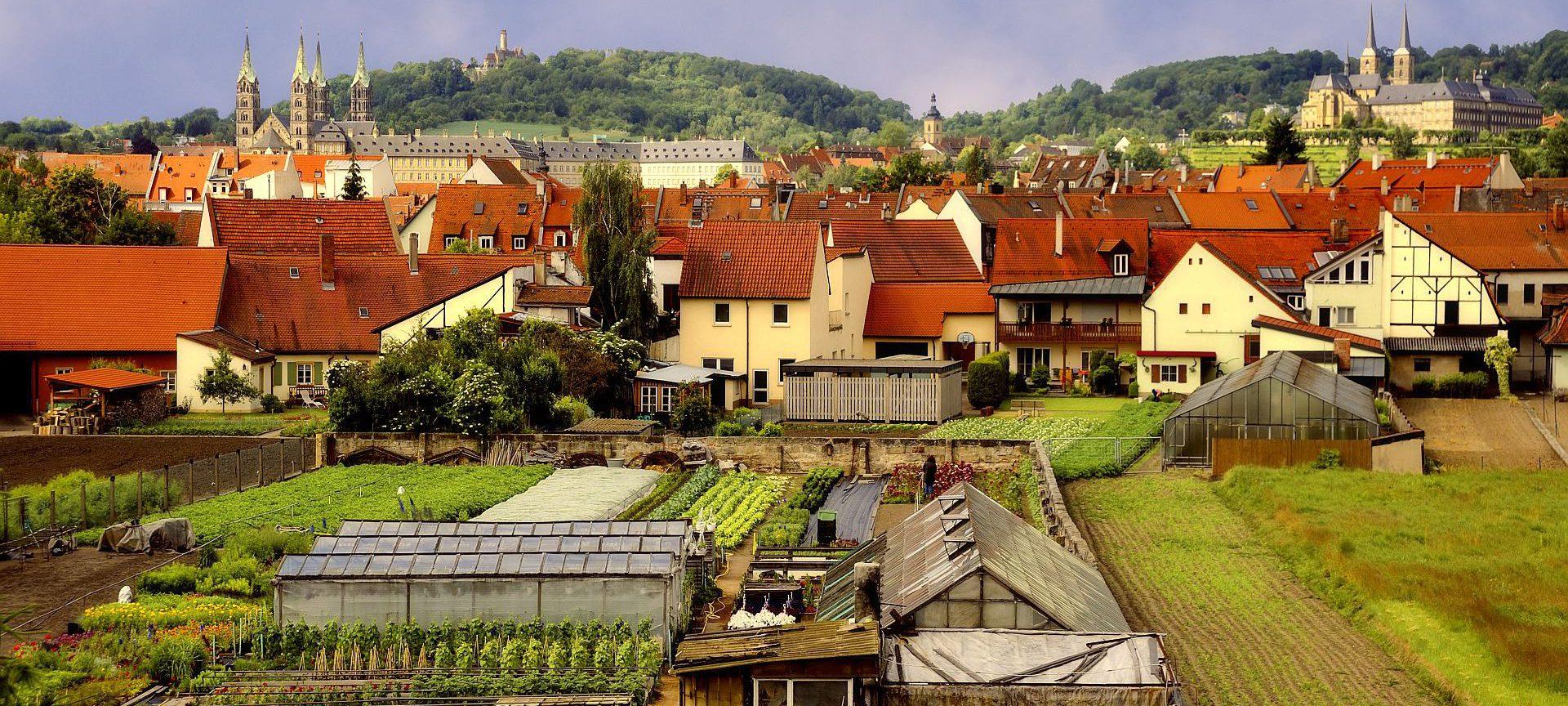
A successful heritage based approach with diverse initiatives addressing the needs of local stakeholders and marketing of products, whilst also remaining part of the city’s distinctive identity
A Successful Heritage-based Approach:
Cultural heritage applies, not just to individual artefacts or buildings, but can also encompass whole cities or landscapes. The City of Bamberg clearly illustrates this from an UA perspective, through preservation of a historic urban market-gardening heritage. This involves the continuing utilisation of vegetable plots which have been in cultivation since the Middle Ages.
Bamberg is located in southern Germany in the north of Bavaria. It is a good example of a central European town with a medieval layout and many historic buildings. Records show that vegetables and herbs have been grown in Bamberg’s Gärtnerstadt since the 14th century, taking advantage of the fertile alluvial soil and good climatic conditions existing there.
The “Bamberger Onion”, is a unique variety, which has been part of local cuisine for centuries. The story of the onion is integral to the history of the Gärtnerstadt itself. Since medieval times, a distinctive culture has evolved around the production of this onion, which has persisted down to the present day. Such customs form the intangible heritage of the Gärtnerstadt. In 2016, the City was successful when Bamberg’s gardening traditions were listed as part of Germany‘s UNESCO intangible heritage.
Promoting Awareness raising initiatives:
To preserve its UA heritage, the City of Bamburg has promoted awareness raising activities. These include development of a website, videos and print media to illustrate different aspects of the Gärtnerstadt’s cultural heritage. A scenic trail has also been created to guide and inform local residents and tourists. This trail is based upon a circular route which focuses on both historic buildings and the gardens themselves.
A museum and a lookout point have also been developed. The museum conveys the cultural and historical connections between market gardening, the Gärtnerstadt and the City of Bamberg itself, whilst the lookout point has provided better public access to the rear of properties. An important lesson has been the need to undertake positive interventions, rather than to merely preserve the Gärtnerstadt as a museum. Developing and modifying the historic functions to suit contemporary needs is more likely to result in the heritage being valued and retained. The lookout point is constructed of steel and glass materials, thereby helping it to relate to the old greenhouses which previously characterised the plots.
Local Participation Initiatives:
Provision of direct support to the gardeners represents another important type of intervention. This is a balancing act; the gardeners can modernise their businesses through, for example, building new greenhouses or by using protective polytunnels for plant production. However, without care, traditional forms of plant production can become marginalised as a result of these more modern practices.
Gardeners have also been permitted to sell their products directly to the public. The resultant market stalls ensure a better income for the gardeners and also allow people to obtain access to the old houses and fields located to the rear. The shops serve as a place for social interaction where different stakeholders, including gardeners, customers and visitors, can meet to chat informally and to exchange their views on the future of the site.
Another important aspect is a city-scale marketing initiative. The City of Bamberg supports the gardeners, for example, through local product-branding initiatives designed to instil a strong sense of local cultural identity. At the same time, however, the City gains access to specific products which can be used to promote a heritage-based identity of Bamberg to a wider audience, thereby creating a win-win scenario.
Gärtnerstadt Bamberg
A video on Bamberg Garden City
From listing to living labs: Bamberg and its World Heritage of urban market gardening
A RESEARCH ON BAMBERG'S CASE








